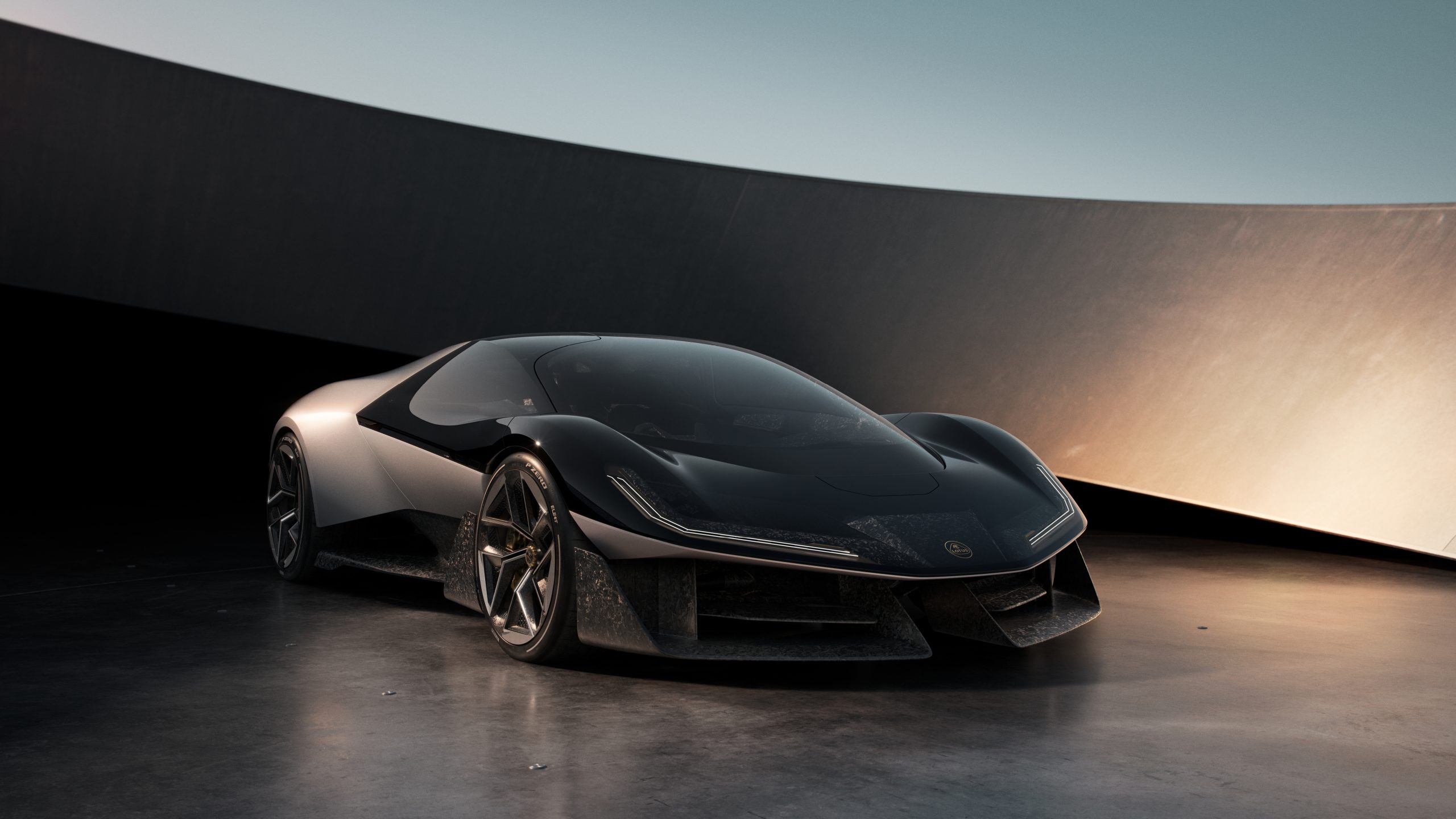This one is for the fans – proof that, even in its electric era, Lotus can rekindle past passions.
Harking back to the company’s first principles Theory One is a (relatively) lightweight and accessible supercar concept that marks a significant departure from the Eletre SUV, Emeya GT, and ultra-limited Evija hypercar.

On the one hand it’s an homage to the glory days of Grand Prix victories and the wonderful wedge design of the Esprit, on the other it’s a technological tour-de-force packed with innovative ideas.
“The project represents three core things,” explains design boss Ben Payne as he guides me around the car in a secret studio.
“It’s, of course, a design vision, so expresses a future design language. It’s an evolution on where we are, but it’s pushing towards the future. This is based on three key pillars, or tenets, which are Digital, Natural and Analog – our DNA. This represents a blueprint for all future Lotus Cars.
“It’s very much a technology vision, so expresses our future vision of how to apply technology. And really what we’re looking to do is define the future of intelligent performance to generate the next level of driver engagement, and to do that by humanising the technology, making sure that it talks in a way which is super intuitive, not cold and hard.
“Then what we’re trying to capture is the feeling of driving a Lotus. In the mid 1960s a journalist said driving a Lotus was almost like you’re wearing the car. And this is a core thing that we’re always trying to express to people. What does it feel like to drive a Lotus?”
Design first, and in the lobby just outside the studio sits a white Esprit S1, a car which had a profound impact on Payne.

“It’s probably the most iconic road car that Lotus ever produced. For someone of my age, my first memory of Lotus was Roger Moore driving the thing in the Bond franchise,” says. “It represents more than just that cultural resonance. This was a piece of something super, super special in its time, and many people experimented wedge design, the simplicity, the kind of dogmatic approach of it, but few actually made it into production reality. The Esprit is as direct a translation of the original concept vehicle to production as can get. So what we’re trying to capture is the spirit of that boldness, simplicity, purity and a statement. So here we have something that’s, once you move around a little bit, quite easy to understand the narrative. We hope it’s a layered approach that talks to digital, natural analog, but it has a purity and a simplicity to the design that talks to cars like Esprit, but not in a way of being a pastiche.”
The wedge-shaped wonders of the 1970s “haven’t been surpassed,” adds Payne. “We study design at various points, and you see where the socio, economic and political climate has an influence on design, because you get bold statements. Futurama in Fifties America was one of them and then the 70s, where there’s a lot of that feeling of post moon landings, etc, we can really push things.
“We’ve had slightly more austere times recently and to put something a little bit more positive back is a good statement. The simplicity is where I feel those designs stand the test of time. So I don’t think a lot of that 70s’ stuff has been surpassed in terms of the utter futurism and the way that has actually lasted.”
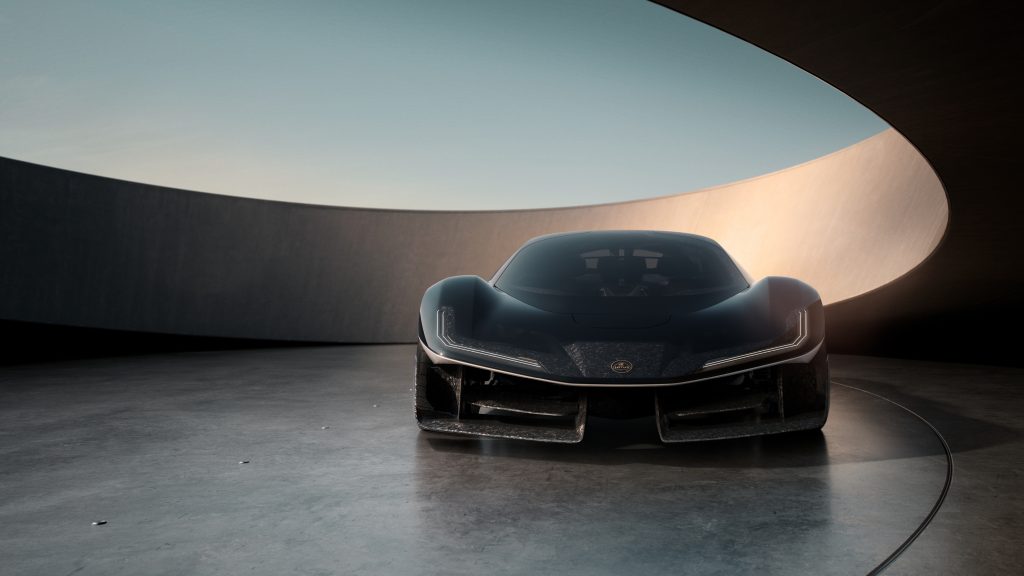
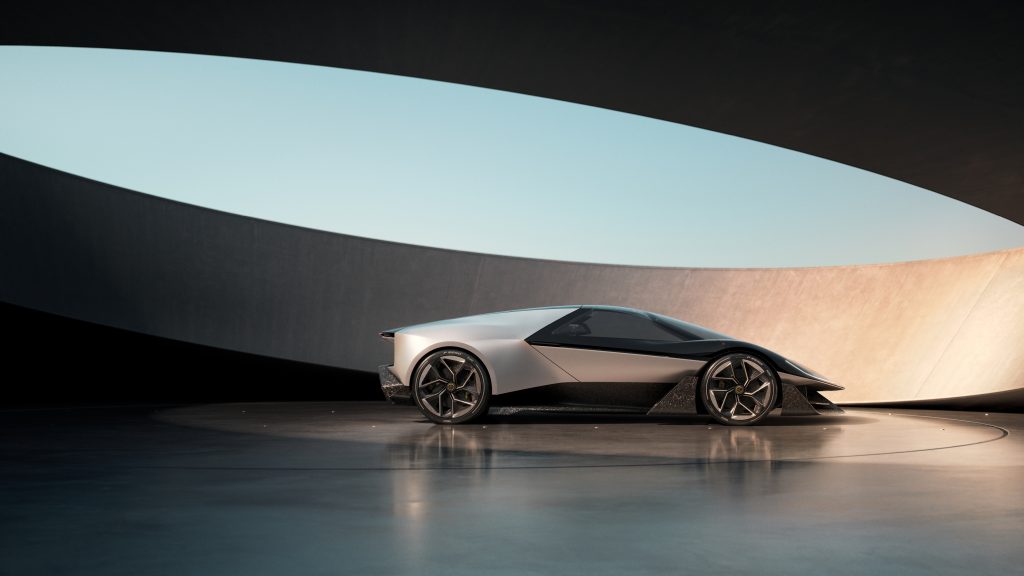
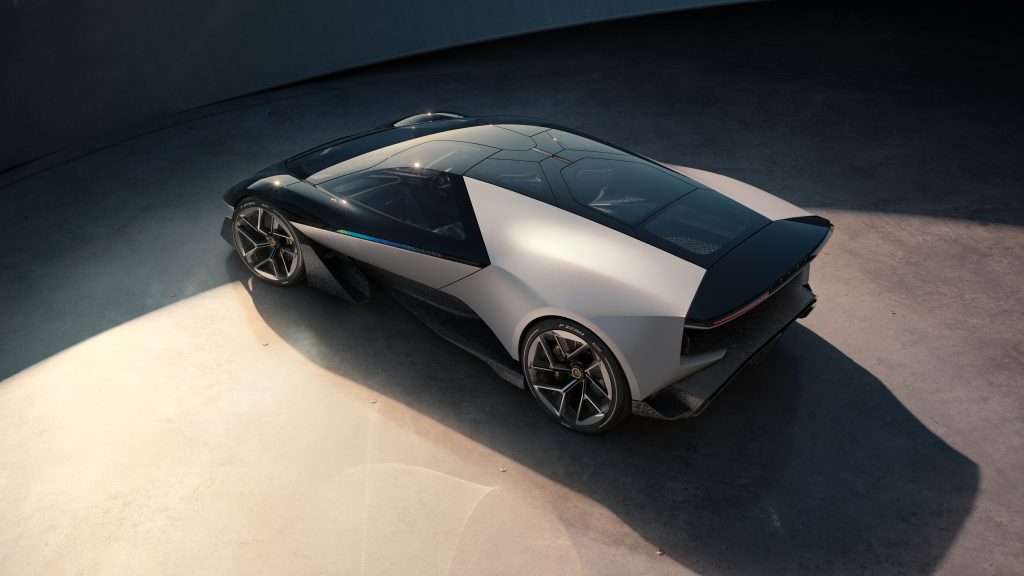

One look at the Theory One and it’s hard not to feel good about the future. I’m an Esprit owner, so clearly not without some bias, but to me the profile and proportions are near perfect, enhanced by the duo-tone black and white paint and aggressively forward-slanted B-pillar and massive tinted glass canopy. Move to the front and there’s an advanced aero treatment that builds on Lotus ‘porous’ design, directing airflow through the front splitter, over aerodynamic suspension wishbones, then under the car to exit through the rear diffuser.
A key feature has been to expose as much of the car’s mechanical components as possible. You’ll need to duck down low to see the front suspension, but at the rear the whole drivetrain is on show through an open window, highlighting the unique way the rear motor and battery are used as a stressed member to which the suspension is bolted.
The “show your workings” concept carries through to an interior that is unlike any other Lotus. For starters there’s the way in – achieved through an ingenious new door opening system that sees both doors slide back on runners then pivoting upwards in a move that’s pure theatre. The next surprise is that Theory One is a three-seater, with a central driving position. The seats are molded into the exposed carbon fibre tub, with passenger seats set back from the driver’s.
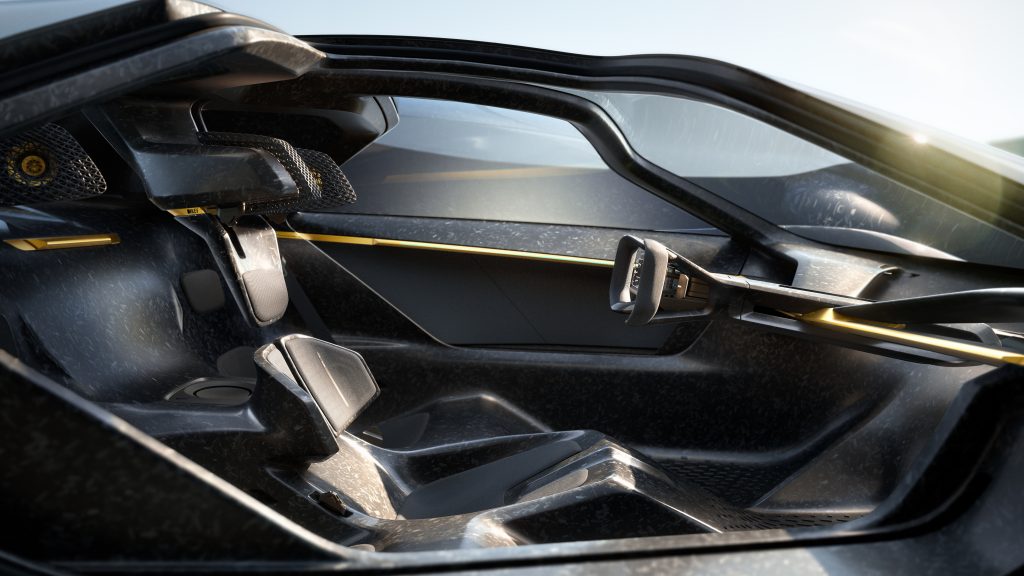
It’s easy to step in, slide down onto the edge of a passenger seat and then across into the driver’s realm. The pedal box and steering yoke then adjusts for laid-back single-seater style driving position. With no dashboard the view ahead is extraordinary and the sense of space like no other vehicle. Throwback touches include subtle gold trim that’s reminiscent of the John Player Special-sponsored Type 76 Grand Prix Car and the exposed inboard dampers that also give that race-car feel. There’s a simple wide digital display below the curved windscreen and one in the center of the steer-by-wire steering column.
“We’ve hit overload of digital tech and screen technology, right? It’s time to wind it back,” points out Payne.
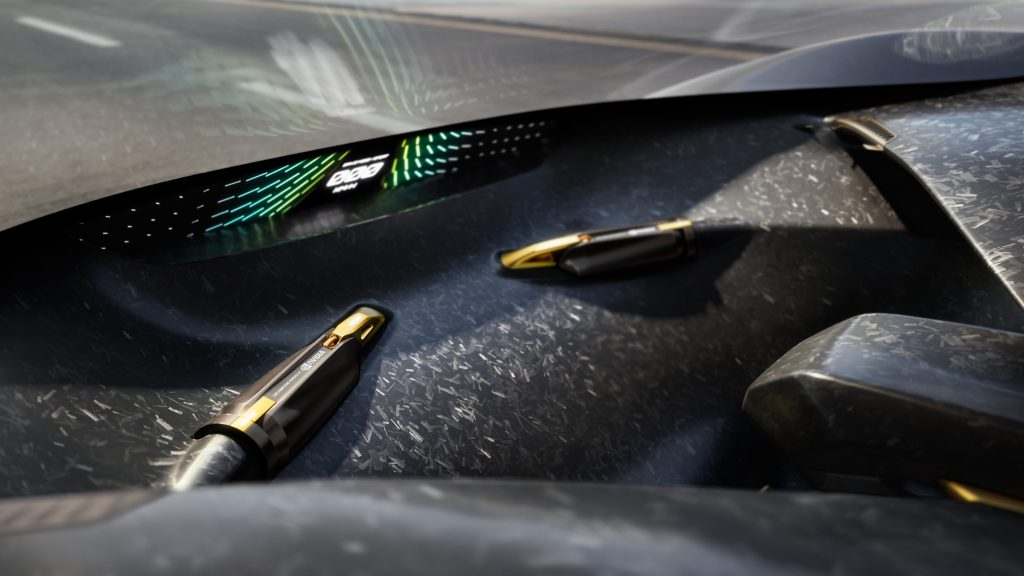
That said Theory One is definitely not short of tech designed to enhance the driving experience. Remember the idea that you “wear” a Lotus? With Theory One you really do. LotusWear is a new lightweight robotic material that allows the car to communicate with the driver and passengers via the seat of their pants. For example the system can link to navigation, delivering a pulse to indicate whether a left or right-hand turn is approaching, or can increase the level of support to counter lateral forces. The headrests feature KEF binaural speakers so each occupant can enjoy his or her own unique sound scape. One passenger might opt for the silence of anti-noise technology, while the other listens to a favourite podcast and the driver gets the stimulation of amplified sounds of the powertrain.
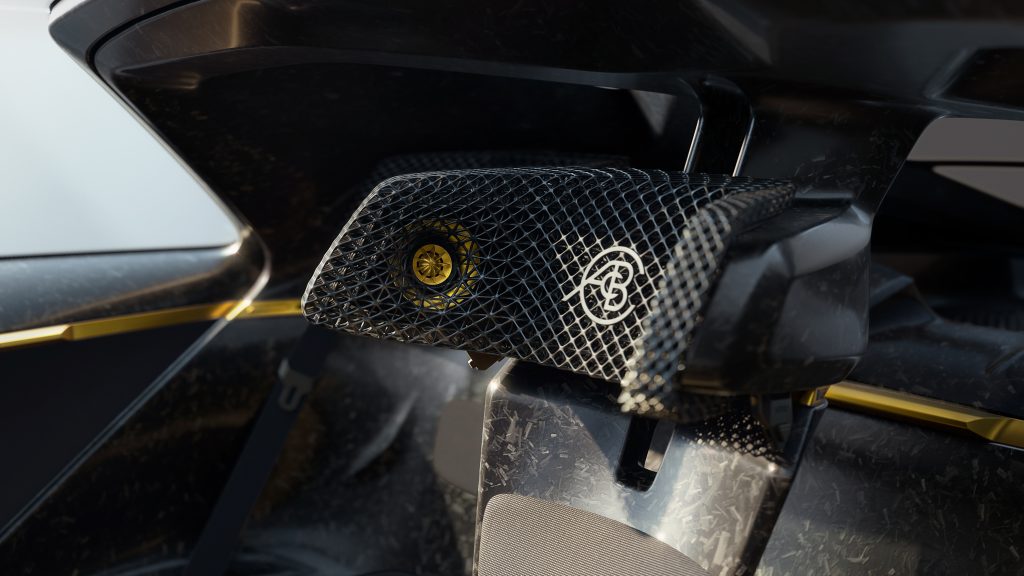

On the subject of power there’s a total of 1,000hp, with 700 going to the rear wheels and 300 directed to the fronts fed by a 70kWh battery pack mounted amidships. Lotus hasn’t issued performance figures but with a weight of less than 1,600kg it will be rapid enough.
Pushrod-activated active suspension, AP Racing six-calliper brakes and specially developed Pirelli tyres should mean handling lives up to the Lotus legend.
Will Lotus put Theory One into practice?
“It heavily informs what comes next,” says Payne. “The reality is that the project and bits that inform this have been around for over two years, so this has been developing and gestating, in the background. The key ideas of this, and how we express our brand identity and how we talk about our design theory that we’re showing now is a prelude to what comes next.”
